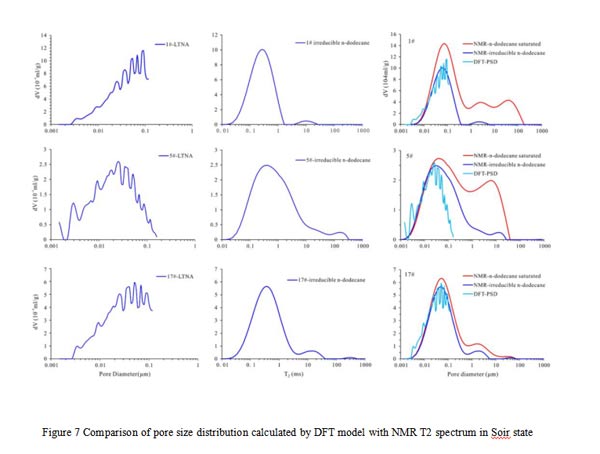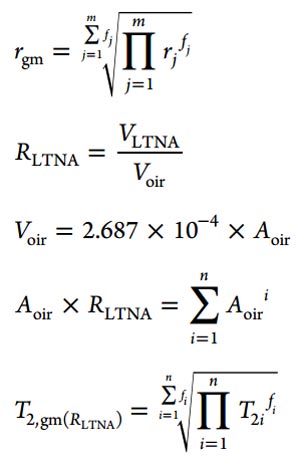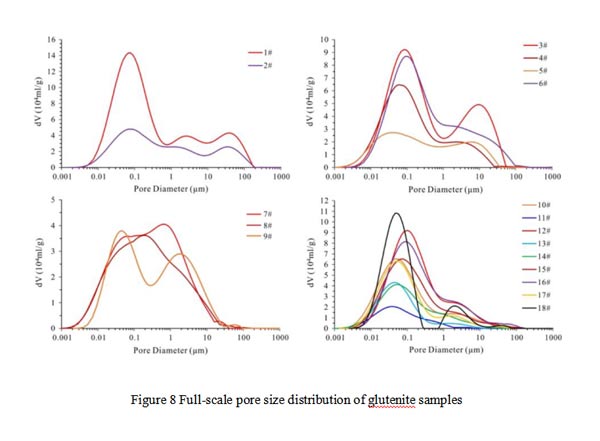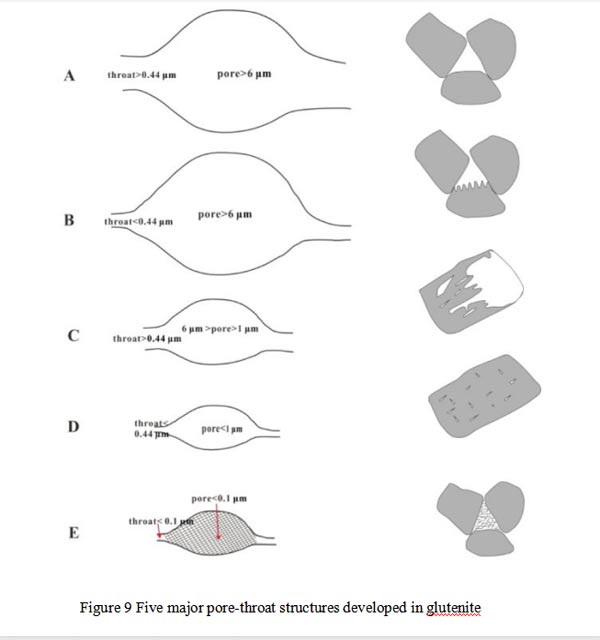Discussion
A new method for transforming T2 spectrum into pore size distribution

By comparing the T2 spectrum of the Soir state with the pore size distribution curve obtained by low-temperature nitrogen adsorption, we find that the first peak of the T2 spectrum in the Soir state has a good similarity in morphology and amplitude to the pore size distribution of the DFT model (see Figure 7). ). Therefore, we can calibrate the NMR T2 spectrum by DFT pore size distribution. The calculation formula for the conversion coefficient C value is as follows:

Where rgm is the weighted geometric mean of the pore size distribution of the DFT model; RLTNA is the pore volume fraction of the low temperature nitrogen adsorption experiment corresponding to Voir; Voir is the NMR pore volume of the Soir state; Aoir is the NMR cumulative signal amplitude in the Soir state T2gm (RLTNA) is the T2 weighted geometric mean of the Soir state T2 spectrum corresponding to the RLTNA ratio.

The sample full-scale pore size distribution obtained by the conversion coefficient C value is shown in Fig. 8. Type I sample pores are mainly developed in the range of 0.001-200 μm; Type II sample pores are mainly distributed in the range of less than 100 μm; Type III samples are mainly pores smaller than 20 μm; Type IV samples are mainly nano-scale pores, and micro-scale pores are less.
Analysis of distribution characteristics and control factors of movable oil
For all samples, pores larger than 6μm are mainly intergranular pores, intergranular dissolved pores and mold pores, mainly containing movable oil (accounting for more than 90%); pores of 0.1 to 6μm are mainly intragranular dissolved pores and clay intercrystalline Hole, the proportion of movable oil in this range increases rapidly with the increase of pore size (20-80%); the pores smaller than 0.1μm are mainly intercrystalline pores of clay, mainly containing residual oil, and the proportion of movable oil is generally low (< 20%). It can be found that the larger the proportion of large-sized pores, the higher the dynamic oil saturation.
By further analyzing the relationship between the volume of the movable oil and the volume of mercury intrusion, it was found that the volume of the movable oil was mainly the pore volume of the throat larger than 0.44 μm. Microscopically, the distribution of movable oil is mainly affected by the pore-throat structure. Figure 9 summarizes the main pore-throat structure types of glutenite, and the proportion of movable oil: A>C>B>D>E.

Macroscopically, mineral components and rock structures affect the structural characteristics of the pore throat, which in turn determines the mobility of the oil. The higher the quartz content, the larger the throat and initial pore size, the more developed the A-type pore throat; the higher the feldspar content, the more developed the A, B and C pore throat; the higher the calcite content, the smaller the pore throat size, D The more the pore throat is developed; the higher the clay mineral content, the more developed the D and E pore throat. The dynamic oil saturation increases with the increase of quartz and feldspar mineral content, and decreases with the increase of calcite and clay mineral content.
Conclusion
In this paper, the full-scale pore size distribution and the quantitative analysis of the movable oil distribution and control factors were carried out for 18 groups of glutenite samples. Have the following results:
(1) The type of glutenite reservoir space was found through comprehensive observation of cast thin sections and scanning electron microscopy;
(2) A new method for obtaining the full-scale pore size distribution of glutenite by combining the nuclear magnetic T2 spectrum and the DFT model pore size distribution in the Soir state is proposed. The samples are classified into four types according to the T2 spectral morphological characteristics in the So state;
(3) The relationship between pore throat structure, mineral content and movable oil saturation was obtained.
 NIUMAG
NIUMAG